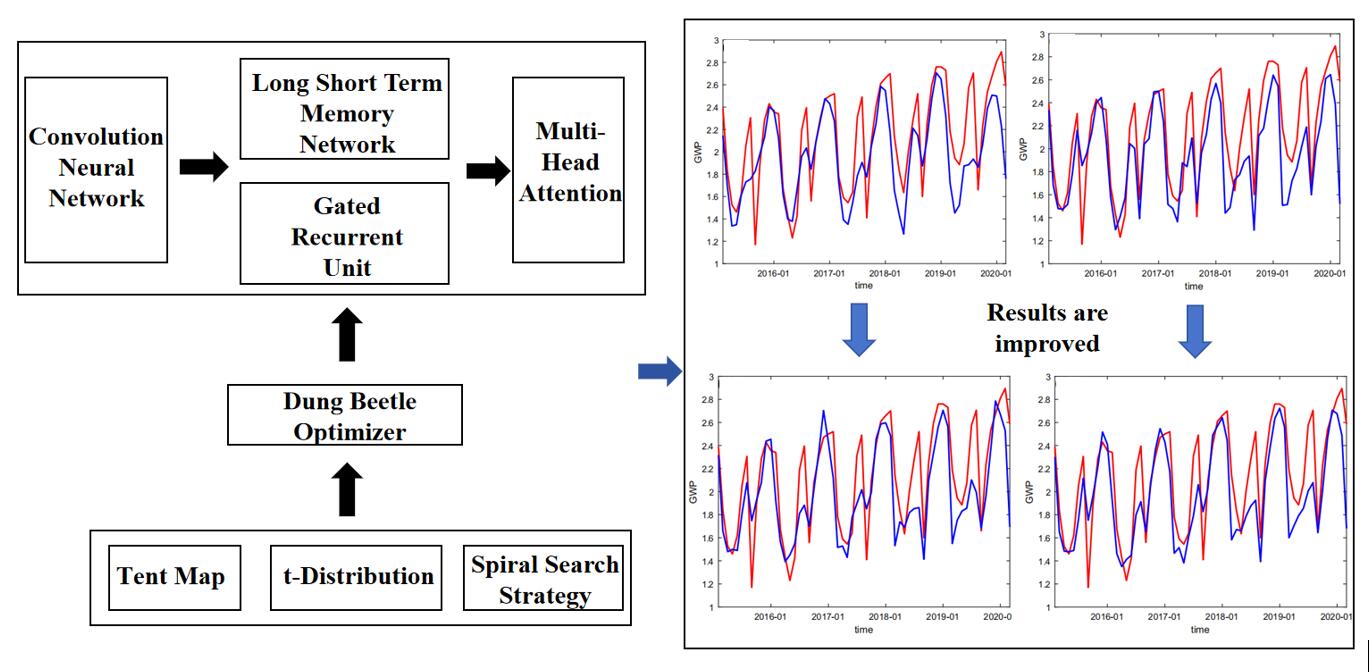For the Ningxia area, located in the arid and semi-arid regions of China, groundwater is one of the most important sources of drinking water. However, there has been little research on the application of machine learning models in predicting groundwater in this area.
Professor Sun Bo (Nanjing University of Information Science and Technology) and colleagues carried out research on groundwater prediction in Ningxia, and found that two hybrid machine learning models—namely, the Multi-head Attention–Convolution Neural Network–Long Short Term Memory (MH-CNN-LSTM) and the Multi-head Attention–Convolution Neural Network–Gated Recurrent Unit (MH-CNN-GRU)—have great potential in groundwater depth prediction in the Ningxia area. The findings have recently been published in Atmospheric and Oceanic Science Letters.
In this study, the factors related to groundwater, such as precipitation, are selected, and two hybrid deep learning models, which are CNN-LSTM and CNN-GRU, are combined with multi-head attention. Then, they are compared with the multiple linear regression model, which is a traditional statistical model. Moreover, the dung beetle optimization algorithm (DBO) is used to further enhance the prediction ability of the hybrid deep learning models by optimizing parameters. The tent map, adaptive T-distribution, and spiral search strategy are used to improve DBO, and the prediction results of models with the improved DBO and the original DBO are compared.
Their predictive performance is better than the traditional multiple linear regression model. In addition, the DBO algorithm can further enhance the prediction accuracy of the model. Compared with the original DBO, the models with the improved DBO perform better. The specific results can be seen in Figure 1.
Precipitation in the Ningxia area is mainly concentrated in summer, and thus the groundwater in this region increases significantly in summer compared to the other three seasons. In the future, the research team will focus on summer groundwater in the Ningxia area and study the related physical mechanisms. Then, whether the addition of factors related to these physical mechanisms can significantly improve prediction results will be further examined.

Fig. 1. The structure of the whole model and the improved results.
Citation: Jiarui Cai, Bo Sun, Huijun Wang, Yi Zheng, Siyu Zhou, Huixin Li, Yanyan Huang, Peishu Zong, 2024. Application of the improved dung beetle optimizer, muti-head attention and hybrid deep learning algorithms to groundwater depth prediction in the Ningxia area, China. Atmospheric and Oceanic Science Letters, 100497, https://doi.org/10.1016/j.aosl.2024.100497.
|